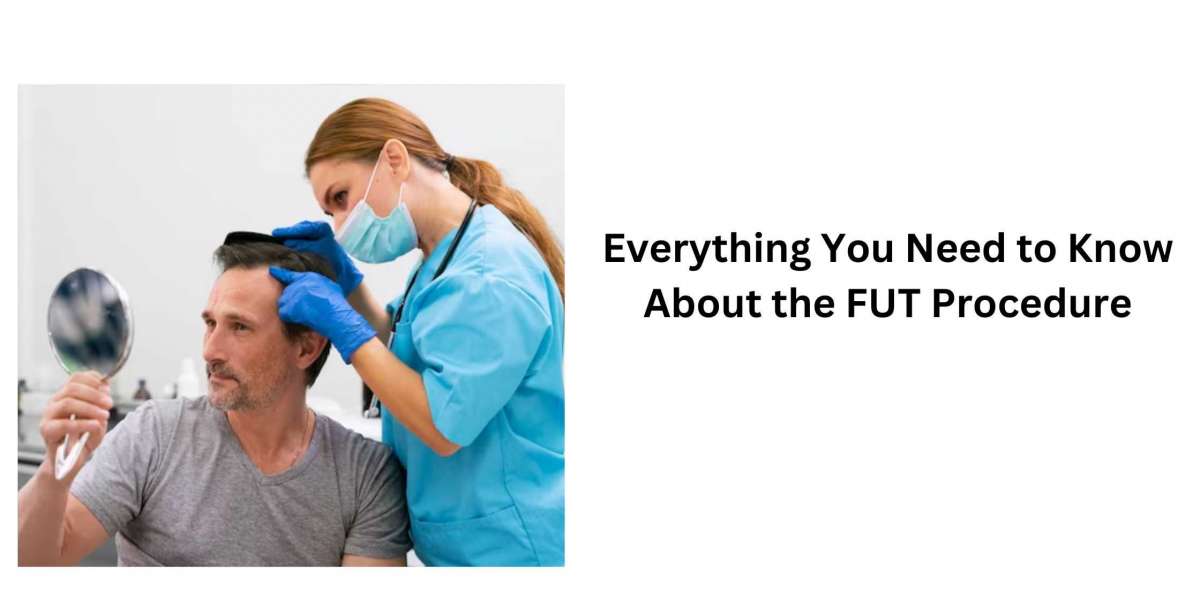The FUT procedure, or Follicular Unit Transplantation, is a well-established method for hair restoration used successfully by many individuals seeking to combat hair loss. This technique involves excising a strip of scalp from the back of the head, which is subsequently separated into individual follicular units and transplanted to the thinning or balding areas. The FUT procedure is known for its effectiveness in providing natural-looking results and has a track record of success in hair restoration. In this article, we will delve into the various aspects of the FUT procedure, including the process, benefits, potential risks, and aftercare.
Understanding the FUT Procedure
The FUT procedure starts with preparing the donor area, typically found at the back of the head, where hair follicles are naturally resistant to balding. A skilled surgeon excises a strip of skin from the area, which is then carefully dissected under a microscope to separate individual follicular units. These units, consisting of hair follicles and their surrounding tissue, are then transplanted into the recipient areas of the scalp where hair is thinning or missing. A vital benefit of the FUT procedure is its ability to collect many grafts in one session, making it particularly effective for individuals with substantial hair loss.
Benefits of the FUT Procedure
One of the primary benefits of the FUT procedure is its capacity to yield a high density of hair follicles, which contributes to a fuller and more natural-looking head of hair. This method is especially advantageous for patients requiring many grafts to achieve their desired hair restoration results. Additionally, the FUT procedure allows for the precise placement of hair follicles, ensuring that the transplanted hair grows in a natural pattern and direction. The technique has a long history of successful outcomes, with many patients experiencing significant improvements in hair density and overall appearance.
Potential Risks and Considerations
Although the FUT procedure provides many advantages, weighing its possible risks and complications is essential. As with any surgical procedure, there is a risk of infection, scarring, and adverse reactions to anesthesia. Additionally, the removal of a strip of scalp can leave a linear scar, which may be noticeable if the hair is cut very short. It is crucial to consult with a qualified and experienced hair restoration specialist to assess individual suitability for the FUT procedure and discuss potential risks and how they can be managed.
The FUT Procedure Recovery Process
Recovery from the FUT procedure generally involves a few weeks of postoperative care. Patients may experience discomfort, swelling, and redness in the donor and recipient areas, which typically subsides within a few days. Following the surgeon's aftercare instructions include:
- Avoiding strenuous activities.
- Refraining from scratching or rubbing the scalp.
- Applying prescribed medications or ointments.
Hair growth from transplanted follicles typically starts within a few months, with full results appearing approximately 12 to 18 months after the procedure.
Preparing for the FUT Procedure
Proper preparation for the FUT procedure is essential to ensure the best possible outcome. This preparation includes a thorough consultation with a hair restoration specialist to discuss goals, expectations, and any medical conditions that could affect the procedure. Patients are usually advised to refrain from taking blood-thinning medications and supplements in the weeks before the procedure to reduce the risk of bleeding. Additionally, arranging for a support person to assist with transportation and postoperative care is beneficial.
Alternatives to the FUT Procedure
Alternative hair restoration methods are available for individuals who may not be suitable candidates for the FUT procedure. Follicular Unit Extraction (FUE) is another popular technique that harvests individual hair follicles directly from the scalp without removing a strip of skin. This method can be less invasive and produce less scarring than the FUT procedure. Other non-surgical options include platelet-rich plasma (PRP) therapy and topical treatments, which can help stimulate hair growth and improve overall health.
Post-Procedure Expectations
After undergoing the FUT procedure, patients should be aware of what to expect during the recovery period. In the days right after the surgery, some discomfort and swelling may occur, but these are usually manageable with prescribed medications. Patients need to avoid activities that could put a strain on the scalp or hinder healing.
Conclusion
The FUT procedure remains highly effective for addressing hair loss and achieving natural-looking results. Given its capacity to deliver numerous grafts and a track record of successful results, the FUT procedure is a favored option for those looking to restore their hair. To make informed decisions and meet their hair restoration goals, individuals should understand the process, benefits, and potential risks of FUT.
FAQs About the FUT Procedure
Q: How long does the FUT procedure take?
A: The duration of the FUT procedure can vary depending on the number of grafts required and the case's complexity. The exact time frame will be discussed during the consultation with the hair restoration specialist.
Q: Will the scar from the FUT procedure be noticeable?
A: However, with proper care and a skilled surgeon, the scar can be minimized and may be covered by surrounding hair.
Q: When will I see the results from the FUT procedure?
A: Hair growth from the transplanted follicles usually begins within a few months after the FUT procedure. Full results, including the final density and appearance of the new hair, are generally visible around 12 to 18 months post-procedure.







